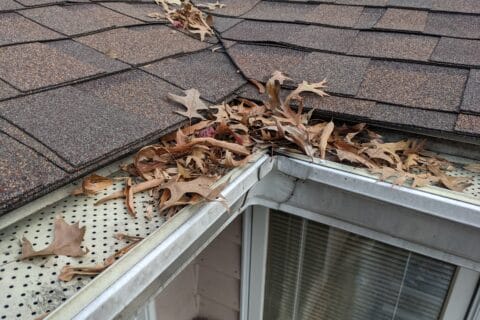Awning Windows vs. Sliding Windows: Which Is Better?
 Revised by Bruce Hulse
Revised by Bruce Hulse
When choosing new windows for your home, two popular styles often stand out: awning windows and sliding windows. Each type offers unique advantages in ventilation, energy efficiency, functionality, and aesthetics, making them suitable for various home designs, climates, and budgets. For Ontario homeowners, understanding the specific benefits and considerations of each window type can help determine the best choice to enhance comfort, efficiency, and property value. This guide comprehensively compares awning windows and sliding windows, allowing you to select the ideal option for your home’s particular needs.
Understanding Awning and Sliding Windows
What Are Sliding Windows?
Sliding windows, also known as slider windows, operate by gliding horizontally along tracks. They consist of two or more sashes—at least one movable—that slide horizontally to open or close. This design provides a streamlined, contemporary appearance and is ideal for areas where vertical space is limited.
Sliding windows are especially popular in Ontario homes with modern designs or properties with restricted exterior space, such as near patios or walkways. They are user-friendly, providing smooth and effortless operation that makes them highly practical for homeowners of all ages.
Key benefits include:
-
Space-saving horizontal operation
-
Minimal maintenance requirements
-
Easy operation with fewer mechanical parts
-
Wide unobstructed views and ample natural lighting
What Are Awning Windows?
Awning windows differ significantly from sliding windows in both function and appearance. Hinged at the top, awning windows open outward from the bottom, creating a protective “awning” effect. This unique opening method allows ventilation even during rainy conditions, keeping your home dry while letting fresh air circulate inside.
Popular throughout Ontario due to frequent rainfall and varying weather conditions, awning windows offer additional benefits in terms of security, insulation, and versatility. They’re especially useful in areas where windows need to be placed higher on walls or above furniture.
Key benefits include:
-
Superior weatherproofing and insulation
-
Safe to keep open during rainy weather
-
Secure, robust design resistant to break-ins
-
Versatile placement options, suitable for higher locations
Energy Efficiency Comparison: Which Window is Better?
Energy efficiency is increasingly important to Ontario homeowners due to rising utility costs and the province’s extreme seasonal temperatures. Properly insulated windows reduce heat loss in winter and heat gain in summer, significantly lowering energy expenses and improving indoor comfort.
Sliding Windows and Energy Efficiency
Sliding windows offer reasonable energy efficiency but may have inherent limitations due to their design. Since they open horizontally along tracks, sliding windows can sometimes be less airtight than hinged window styles. Small gaps along the sliding track might allow drafts or air leaks, particularly if the windows are older or not installed correctly.
However, modern sliding windows featuring double glazing, insulated frames, and weatherstripping significantly reduce these potential inefficiencies. Choosing well-built sliding windows and ensuring proper installation substantially enhances their overall energy performance.
Awning Windows and Energy Efficiency
Awning windows generally provide superior energy efficiency compared to sliding windows. Their top-hinged design utilizes compression seals that create a tight, airtight closure. This design significantly reduces drafts and heat transfer, maintaining consistent indoor temperatures throughout Ontario’s variable seasons.
Because of their superior sealing properties, awning windows are excellent for homes prioritizing energy conservation. When combined with double or triple glazing and insulating frames, awning windows become a highly energy-efficient choice, contributing to lower heating and cooling costs over the long term.
Ventilation and Airflow: Maximizing Comfort
Effective ventilation is essential for maintaining indoor air quality, reducing humidity, and preventing mold or mildew growth—common concerns for Ontario homes due to seasonal humidity fluctuations.
Ventilation Advantages of Sliding Windows
Sliding windows excel at providing maximum ventilation when fully open. Their horizontal sliding design creates large openings, allowing generous airflow. This is particularly beneficial during Ontario’s warmer months, when optimal ventilation reduces reliance on air conditioning and improves indoor comfort.
However, sliding windows may be limited during inclement weather, as they must typically remain closed during rainfall or snow to prevent water intrusion.
Ventilation Advantages of Awning Windows
Awning windows uniquely allow effective ventilation even during wet weather. Their top-hinged design prevents rainwater from entering the home, enabling homeowners to maintain consistent airflow regardless of external conditions. This makes them especially beneficial in regions of Ontario prone to frequent rainfall or high humidity.
While awning windows generally provide less immediate airflow compared to fully open sliding windows, their capability to remain partially open during all weather conditions offers consistent and reliable ventilation.
Safety and Security Features: Protecting Your Home
Home security remains a top priority for Ontario homeowners, making window choice essential in protecting your property against intrusion.
Security of Sliding Windows
Sliding windows typically include simple locking mechanisms, though their horizontal sliding tracks can occasionally be vulnerable to forced entry if not reinforced. Homeowners looking to enhance security can add secondary locks or utilize multipoint locking systems, greatly improving the security level of sliding windows.
Security of Awning Windows
Awning windows are inherently more secure due to their outward-opening, top-hinged design. Intruders find it significantly harder to pry open awning windows from the outside. Additionally, modern awning windows usually incorporate multipoint locks or secure latches, further enhancing protection and offering Ontario homeowners peace of mind.
Maintenance and Cleaning: Ease and Convenience
Window maintenance is another essential factor in long-term satisfaction and performance. Ease of cleaning and upkeep directly contributes to durability, appearance, and window lifespan.
Maintenance Benefits of Sliding Windows
Sliding windows are exceptionally low-maintenance, largely due to their simplified horizontal track system. They require minimal care, primarily limited to occasional cleaning of tracks to ensure smooth operation. Their straightforward design means fewer mechanical components to wear out or malfunction, making sliding windows highly practical for homeowners who prefer low-maintenance solutions.
Maintenance Benefits of Awning Windows
Awning windows, while requiring slightly more attention due to hinges, remain relatively easy to maintain. Occasional lubrication of hinges ensures smooth functionality, and their outward-opening design makes exterior cleaning simpler from inside your home. Overall, awning windows still offer low-maintenance advantages, despite the marginally higher care required compared to sliding windows.
Cost Considerations: Budgeting Your Investment
Budget is always an essential consideration for homeowners choosing windows. Prices for awning and sliding windows can vary significantly depending on several factors, such as materials, window size, glazing options, brand reputation, local market conditions, and installation complexity. For precise estimates, homeowners should consult directly with window suppliers or installation professionals to obtain accurate quotes tailored to their specific needs and circumstances.
Cost of Sliding Windows
Sliding windows typically represent a more budget-friendly option, primarily due to their simpler construction and fewer moving parts. In Ontario, quality sliding windows generally range from approximately $500 to $1,000 per window. This cost range can fluctuate based on specific customizations such as glass type, frame materials (vinyl, aluminum, wood), window size, and the complexity of installation.
Cost of Awning Windows
Awning windows often have slightly higher upfront costs because of their hinged mechanisms, superior weatherproof sealing, and additional hardware components. Typically, in Ontario, homeowners can expect to pay between $500 and upwards of $1,200 per window. Prices can vary depending on glazing options (double or triple glazing), window dimensions, frame materials, and any specialized installation needs.
While awning windows usually carry a higher initial investment, they offer superior long-term benefits in energy efficiency, home security, and consistent weather protection. These advantages may contribute significantly to long-term energy savings, potentially offsetting the initial higher costs over time.
Disclaimer:
The price ranges provided above are general estimates based on typical market trends in Ontario. Actual window costs can vary widely depending on specific product choices, installation requirements, local market conditions, supplier pricing strategies, and individual home specifications. For accurate budget planning, obtaining multiple personalized quotes from local window professionals is highly recommended.
Choosing the Right Window for Your Home
Best Situations for Sliding Windows
Sliding windows are optimal in specific contexts:
-
Homes with limited exterior or interior space for window clearance
-
Contemporary architectural designs requiring sleek aesthetics
-
Budget-conscious homeowners looking for cost-effective yet functional options
-
Spaces prioritizing large, unobstructed views and ample airflow in warmer seasons
Best Situations for Awning Windows
Awning windows are ideally suited for other contexts:
-
Areas experiencing frequent rain or high humidity, requiring reliable year-round ventilation
-
Energy-efficient homes prioritizing superior insulation and airtightness
-
Higher wall placements or spaces above counters, furniture, or sinks
-
Homes needing enhanced security and weatherproof performance
Final Verdict: Making the Right Choice
Selecting the best window style for your Ontario home ultimately depends on your specific needs, priorities, and budget. If affordability, ease of use, low maintenance, and maximum ventilation during clear weather are your top priorities, sliding windows offer excellent value and performance.
However, if superior energy efficiency, consistent ventilation during inclement weather, enhanced security, and long-term durability outweigh initial costs, awning windows may be the superior choice. Their robust design and insulation capabilities ensure reliable performance year-round, ideally suited to Ontario’s varied climate.
Regardless of your choice, investing in quality window materials and professional installation ensures your new windows effectively enhance your home’s comfort, appearance, and energy efficiency for years to come.
Key Takeaways
-
Sliding Windows: Affordable, space-efficient, excellent ventilation in clear weather, low-maintenance.
-
Awning Windows: Superior insulation and weather protection, better security, consistent ventilation during rain.
-
Consider energy efficiency, ventilation needs, maintenance preferences, and security when making your decision.
-
Professional installation maximizes window performance, efficiency, and durability.
By carefully considering these factors, Ontario homeowners can confidently select window styles that effectively meet their home’s needs and enhance their overall living experience.


